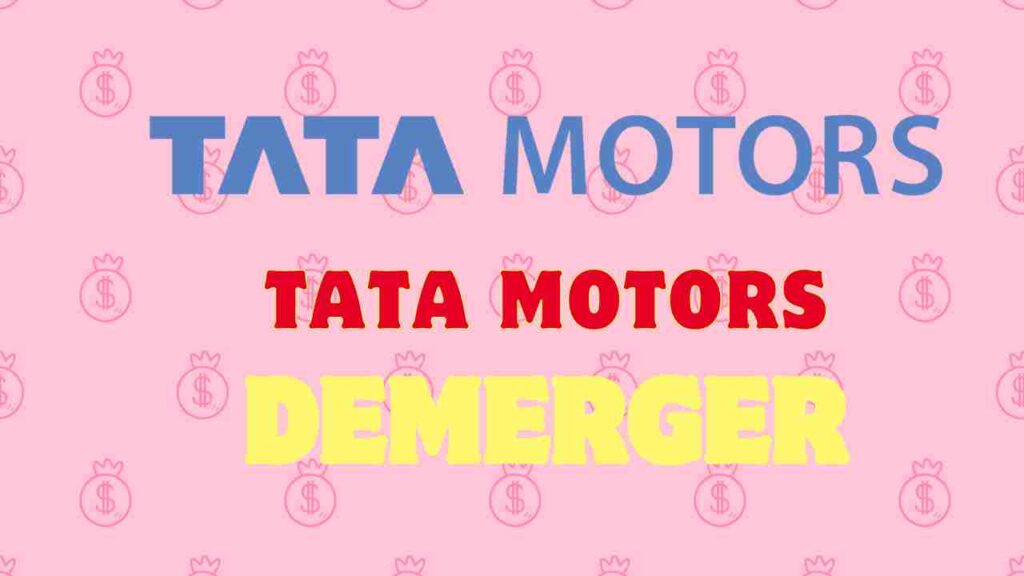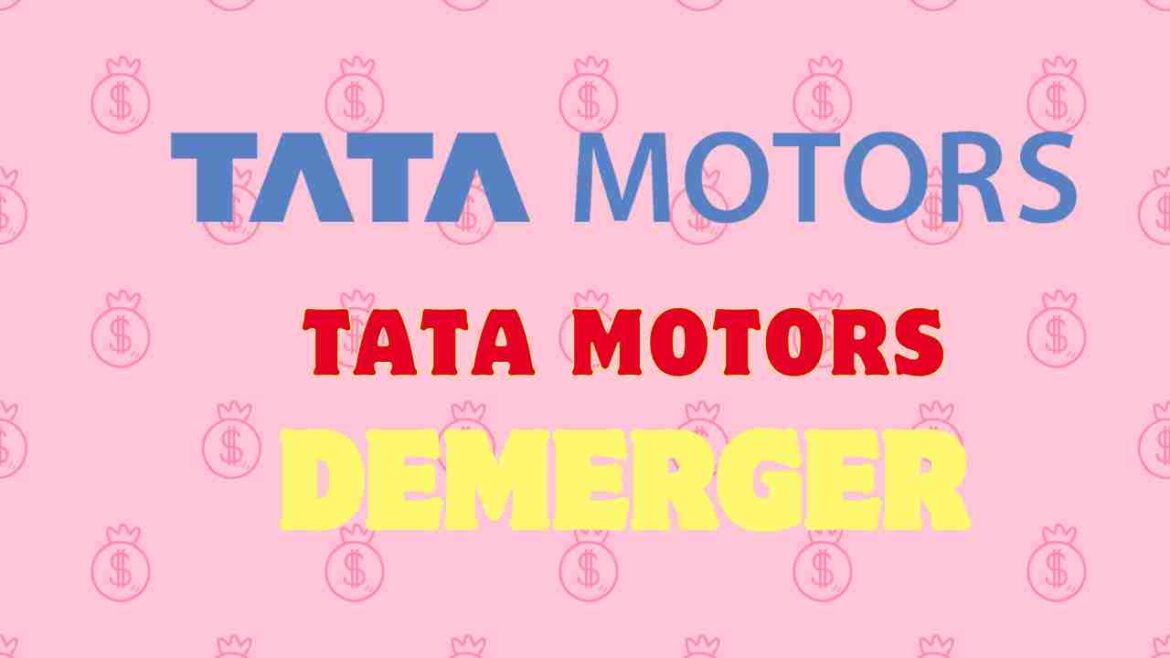Tata Motors Initiates Demerger : Tata Motors recently announced a strategic move to demerge its operations into two separate entities – one housing the Commercial Vehicle (CV) business and related investments, and the other encompassing the Passenger Vehicle (PV) business, including PV, Electric Vehicles (EV), Jaguar Land Rover (JLR), and associated investments.
Tata Motors Initiates Demerger Amidst Market Surge: Analysts Weigh In

The Board of Directors, in a meeting on March 4, approved the demerger proposal, which is anticipated to take around 15 months to complete. The company has clarified that the demerger will be implemented through an NCLT scheme of arrangement, ensuring that all Tata Motors shareholders maintain identical shareholding in both listed entities.
Analysts Assess Impact and Share Insights:
UBS has described the demerger as a structural simplification, yet it sees no significant unlocking of material value. The brokerage firm maintains a ‘Sell’ rating on Tata Motors, setting a target price of ₹600 per share.
Morgan Stanley, on the other hand, views the demerger as a reflection of Tata Motors’ confidence in the PV segment’s self-sustainability. The brokerage has assigned a target price of ₹1,013 to the stock.
Nuvama Institutional Equities considers the demerger a non-event on an immediate basis and believes it may lead to Tata Motors exiting Nifty 50 and Sensex, akin to Jio’s demerger from Reliance Industries.
Furthermore, Nuvama Equities suggests that maintaining a position in passive indices will depend on the smaller entity’s (CV business) market capitalization, estimated at 25% of the total.
Global Indices Evaluation: Assessing Tata Motors’ Global Standing
In-Depth Examination of Global Indices Criteria:
As Tata Motors embarks on its strategic journey of demerging into distinct business entities, a critical aspect comes into focus — its eligibility for inclusion in renowned global indices such as MSCI and FTSE. These global benchmarks play a pivotal role in shaping the perception of Tata Motors on the international stage.
Criteria for Eligibility:
The evaluation process for these indices hinges on various factors, with the market capitalization of the smaller entity (presumably the Commercial Vehicle business) taking center stage. These global entities, including MSCI and FTSE, are set to meticulously scrutinize Tata Motors’ financial metrics and market standing as part of the eligibility assessment.
Nuvama Equities’ Insight:
In the midst of this anticipation, Nuvama Institutional Equities provides a valuable perspective. According to Nuvama, the pivotal factor determining Tata Motors’ continuous inclusion in these passive indices would be the market capitalization of the Commercial Vehicle (CV) business post-demerger. Specifically, the firm posits that if the CV business constitutes approximately 25% of the total market capitalization, Tata Motors is likely to maintain its coveted position in these global benchmarks.
Strategic Implications for Tata Motors:
The outcome of this evaluation holds profound implications for Tata Motors. Remaining part of these global indices signifies sustained international investor interest, potential influx of capital, and heightened visibility. On the contrary, exclusion might prompt a reassessment of the company’s global standing and necessitate a reevaluation of strategies to regain entry into these prestigious indices.
Synergies and Divergence Across Business Segments:
The demerger strategy, segregating Commercial Vehicle (CV) and Passenger Vehicle (PV) businesses, resonates with the overarching trend of streamlining operations for enhanced efficiency. Nuvama’s emphasis on the CV business’s market cap underlines the distinctive nature of these segments and their potential impact on Tata Motors’ global market standing.
Ongoing Wait for Clarity:
In the midst of these deliberations, analysts and investors alike are in a state of anticipation, awaiting further details and clarity on the specifics of the demerger and its implications. The nuanced market dynamics and the delicate balance between the market caps of the two entities post-demerger remain crucial elements in this intricate evaluation process.
As Tata Motors navigates these global considerations, its strategic decisions and market standing will continue to shape the narrative around its global competitiveness and investor appeal. The outcome of this evaluation promises to be a significant milestone, influencing the trajectory of Tata Motors on the international stage.
Market Performance and Investor Sentiment: A Closer Look
Impressive Share Price Surge:
In the tumultuous landscape of the automotive industry, Tata Motors has emerged as a standout performer, witnessing an extraordinary surge in its share price. Over the last 36 months, the stock has demonstrated remarkable resilience, delivering an impressive 204% return. This robust performance significantly surpasses the benchmark Nifty index, which recorded a modest ~50% return during the same period.
Driving Forces Behind the Rally:
The surge in Tata Motors’ stock is attributed to a confluence of factors, with two major drivers standing out: improved financials and sustained demand momentum. The company’s strategic initiatives and operational efficiency have evidently bolstered its financial standing, resonating positively with investors. Additionally, the sustained demand momentum reflects the market’s confidence in Tata Motors’ ability to navigate challenges and capitalize on emerging opportunities.
Analyst Perspectives on the Rally:
Motilal Oswal Financial Services, recognizing Tata Motors’ commendable performance, has recently adjusted its stance. Despite acknowledging the company’s strong showing, the brokerage firm has downgraded Tata Motors shares from ‘Buy’ to ‘Neutral.’ This adjustment is underlined by Motilal Oswal’s prudent assessment of the stock’s limited upside potential, considering the recent sharp run-up in its value.
Brokerage’s Outlook and Target Price:
While the rating has shifted, the brokerage maintains an unchanged target price of ₹1,000 per share. This conservative outlook from Motilal Oswal reflects a cautious approach in light of the recent surge, hinting at a nuanced market sentiment that seeks to balance optimism with a realistic evaluation of the stock’s current valuation.
Real-time Market Dynamics:
Providing a snapshot of the latest market dynamics, as of the most recent update, Tata Motors shares continued to showcase strength. Trading on the Bombay Stock Exchange (BSE), the stock was observed at ₹1,034.40 apiece, marking a 4.78% increase at 9:40 am. This real-time update captures the ongoing investor interest and market sentiment surrounding Tata Motors.
In essence, while Tata Motors basks in the glow of a significant stock price rally, investors and analysts remain cautious, carefully navigating the balance between celebrating the company’s accomplishments and exercising prudence in the face of market dynamics and potential future developments. The downgraded rating from Motilal Oswal underscores the importance of a measured approach even in the midst of a noteworthy market upswing.
ALSO READ :Tata Tiago EV Launched At a Special Price
Conclusion: Tata Motors Initiates Demerger
Tata Motors’ decision to demerge its business units has stirred varied responses from analysts, with some viewing it as a positive step in simplifying the structure and others expressing caution about the immediate impact on shareholder value. The market surge in Tata Motors’ stock reflects a broader optimism, although analysts are careful in their assessments, considering factors like global indices evaluation and potential synergies across different business segments.




